When it comes to M&E support installations, one of the most important components is channel (as I’m sure you know if you’re reading this!).
If you’re not familiar with it, channel is a type of structural steel shape commonly used in construction and building services. Its shape provides rigidity, hence it being a popular choice for supporting loads and building services.
Channel is also very versatile, so it’s no wonder it’s so common. It’s pretty much considered an essential component for supporting building services and ensuring the safety of building occupants.
However, with so many different options available, it can understandably become confusing to know which channel profile to choose from.
In this article, we will outline the different channel profiles, gauges, and finishes available and discuss the factors that should be considered when making your decision.
Bear in mind, channel is a universal product, meaning it’s not exclusive to the M&E sector – we’re focusing on its use for M&E applications here.
- What are the different channel profiles?
- Why does the type of channel matter (plain/slotted/single/back-to-back)?
- What profile height and gauge of channel should you choose?
- Should all sourced channel be marked for my bracketry?
- What finish should you choose for channel?
- Conclusion
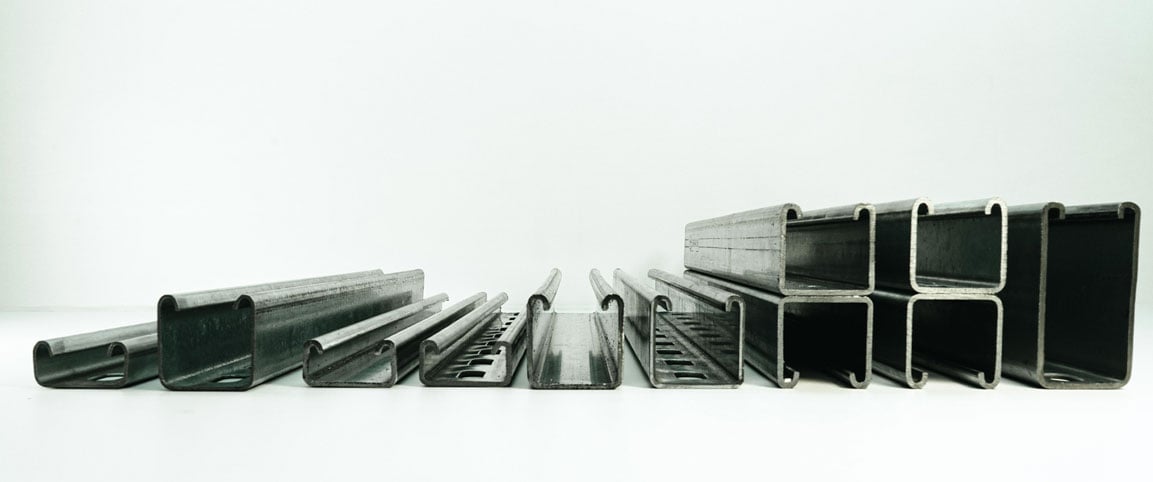
What are the different channel profiles?
In terms of its profiles, the channel has a few different options, each with unique characteristics and applications.
The most common types are
- Plain
- Slotted
- Back-to-back
- Single
To clarify, back-to-back channel is two parallel flanges of single channel which are welded together. Single channel can either be plain or slotted, and lightweight or heavyweight, and the same goes for back-to-back channel. What determines how heavy-duty the channel is is the gauge, which can be either 2.5mm or 1.5mm. It also comes in 2 different heights: 21mm and 41mm.
Heavy gauge channel:
- HS41 – slotted 41 x 41 x 2.5mm channel
- HP41 – plain 41 x 41 x 2.5 mm channel
- HS21 – slotted 41 x 21 x 2.5mm channel
- HP21 - plain 41 x 21 x 2.5mm channel
Light gauge channel:
- LS41 – slotted 41 x 41 x 1.5mm channel
- LP41 – plain 41 x 41 x 1.5 mm channel (call to order)
- LS21 – slotted 41 x 21 x 1.5mm channel
- LP21 - plain 41 x 21 x 1.5mm channel (call to order)
Back-to-back:
- HB41/S - 41 x 41 x 2.5mm slotted B2B channel
- HB41/P - 41 x 41 x 2.5mm plain B2B channel
- HB21/S 41 x 21 x 2.5 slotted B2B channel (call to order)
- HB21/P - 41 x 21 x 2.5 plain B2B channel (call to order)
Why does the type of channel matter (plain/slotted/single/back-to-back)?
So, when would you choose one type over the other? Fair question.
For starters, let’s get this point out of the way: slotted channel (in particular HS41) is actually the standard, or “go-to” type of channel; so technically, the better question is, when might you not use it?
It comes down to preference and tradition, really. Not only do some people prefer the appearance of slotted channel, but it’s also more convenient.
Although it’s true that plain channel has a slightly higher load capacity than slotted (for 1m lengths, 431kg vs. 397kg, respectively) thanks to the lack of holes, it’s quite a marginal difference in the grand scheme of things – especially when considering the other benefits of slotted channel.
These include: the fact that the slots make the process of fixing anchors to a substrate, including composite metal decking, really easy and simple, as well as fixing channel brackets. This makes slotted channel the more suitable option for trapeze brackets, header rails, and even rooftop applications such as an AHU frame – as plain channel can collect water and cause rusting. For these reasons, slotted channel and more specifically HS41, is the default for most M&E applications.
If you’re looking to support more heavy-duty loads, for example, some cable ladder or large pipework, you might want to upgrade from single to back-to-back channel. Not only does it support extra weight, back-to-back gives almost infinite adjustability thanks to it having two open sides. Whatever you want to fit can be fitted anywhere along the top and bottom, so there are countless fixing positions. You could have a run of cable tray on top, while fixing pipe clamps to the bottom side. This is true for both HB41 slotted and HB41 plain back-to-back channel (which one you use depends on the weight of the services - see next subheading).
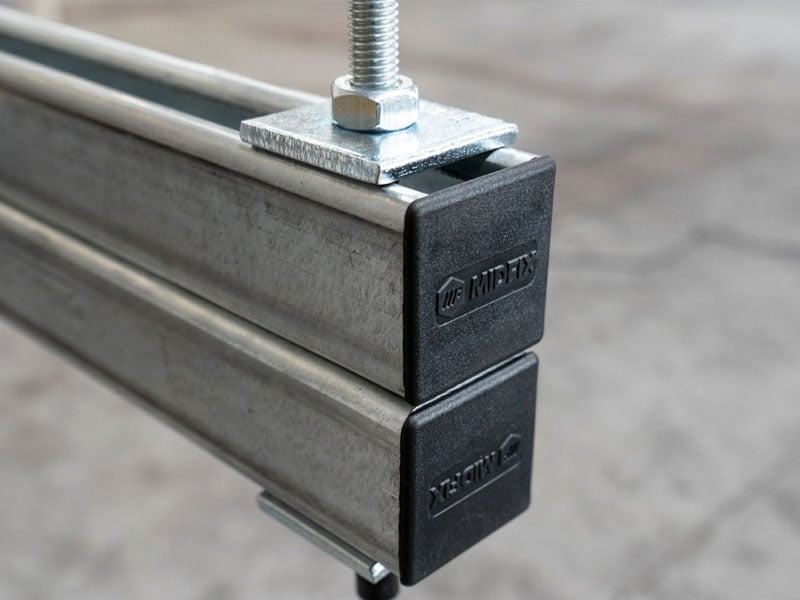
In comparison, the number of areas you can fit connections to are limited with single slotted channel, and if you needed more, you might have to drill through single channel, compromising its strength. If you don’t quite require the strength of HB41/P back-to-back channel, but you want the adjustability of having 2 open sides to fix to, you can opt for HB41/S back-to-back. It will also still be much stronger than single channel as the two flanges being welded together provides extra robustness. Basically, it acts like single HS41 but with two sides to connect to.
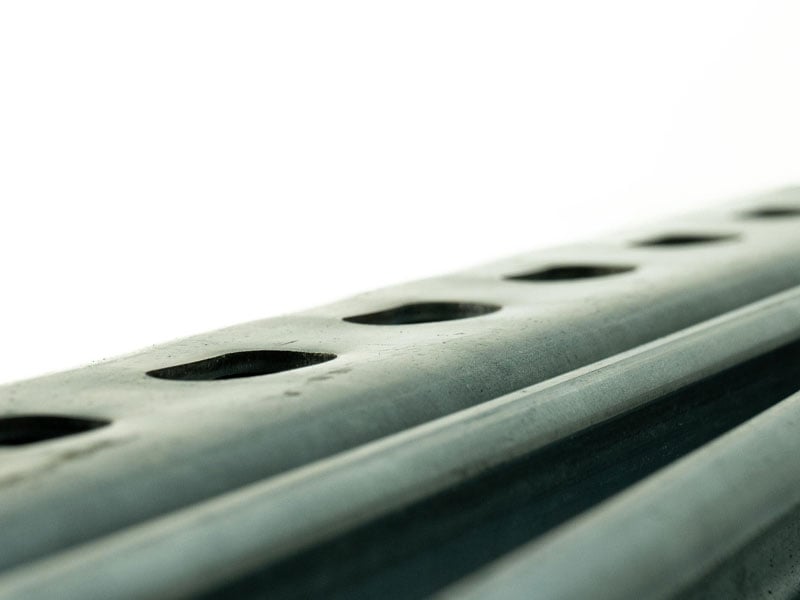
So… when would you ever need to use plain channel? Well, only in certain, very specific cases where plain channel might actually save you time; for example, if you need to fix channel to existing steelwork using self-drilling (TEK) screws, it’s much easier to do so with plain channel (as a washer would be required if using slotted).
What profile height and gauge of channel should you choose?
As briefly mentioned in the above paragraphs, channel comes in either 1.5mm (light) gauge or (heavy) 2.5mm. The different gauges mean a variation in load capability. Self-evidently, that means you should think about what loads you are going to place on the channel bracket before sourcing your channel.
For lightweight services, where the load is not your primary concern, you’d be saving some money with 1.5mm gauge and still be within the load capacity. However, for heavier loads (and long spans), you’d obviously need 2.5mm channel. Just make sure you’re checking the load data of your channel and comparing that with the loads of your services, so as not to waste material and ensure cost-effectiveness.

It is worth noting though, that with light gauge channel, it can be a struggle to keep end caps on them. Because of its thinner material, the internal dimension/opening is slightly bigger and the end caps are made for the dimensions of HS channel not LS; therefore it can fall off.
To add, the thinner material of LS is also more flexible and therefore prone to bending, so some perceive it negatively and frown upon it. This would only happen when overloaded, though – again, that’s why we emphasize the need to follow load data. (Sidebar: When channel is assembled for bracketry applications then it must have the relevant design data showing all components have been tested together, including the anchor, drop rod, load-bearer, and all connections. If you’re using a tested channel system like MIDFIX MX, you’ll have access to comprehensive data available, allowing you to make better judgements on what channel to use.)
For the above reasons, however, most people will opt for heavy gauge channel to ensure the shape is kept and only stray in special circumstances and/or for lightweight services. It’s not really seen as a question of ‘heavy vs. light gauge’ in the industry, but rather ‘standard gauge vs. light gauge’ channel.
The other factor that adds to the load-bearing capacity of a channel length is its height. 41 x 41 channel is always stronger than 41 x 21, hence why it is traditionally the ‘go-to’. But if the latter can achieve the load capacity that your loads require, there’s no reason why you wouldn’t go for that as it’s the more cost-effective option – the only thing stopping you is tradition!
To add, in some cases there may be space constraints and that extra 20mm of space can make all the difference, and that’s another example of when you might choose 41 x 21 channel over 41 x 41.
Moreover, for trapeze bracket situations, there’s no added benefit to using 41 x 41 channel over 41 x 21 when using it as a header rail as it is inverted and fixed into the substrate. Either way, you’d still be relying on 2.5mm thick metal, so there’s no added durability.
At the end of the day, much of it comes down to tradition and doing what you’re “used to”, as well as preference. Something as simple as aesthetics could be the reason you choose one type of channel over the other – you might prefer the uniform look of plain channel or of 41 x 41 channel, and so on.
Should all sourced channel be marked for my support bracketry?
The BS 6946:1988 standard states that channel should be ‘marked’ for onsite verification.
In line with that, the 2018 Hackitt report ‘Building a Safer Future’ identifies the need for “an improved labelling regime which will facilitate the right products being put together as systems and enable more effective record-keeping of this information through the golden thread of building information.”
Therefore, channel should be marked & traceable in order to access the necessary data to back it up.
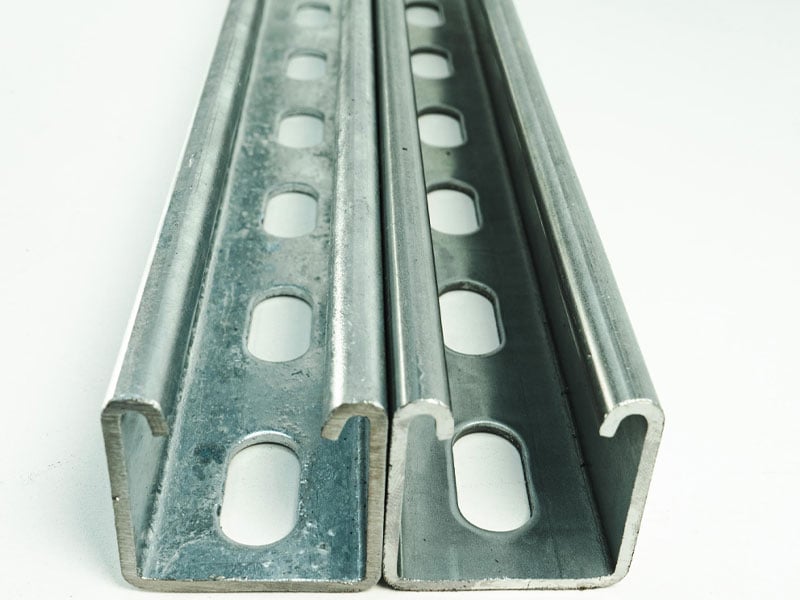
What finish should you choose for channel?
Along with the different profile types, the finish of the channel is also an important factor to consider.
Channel is available in hot dip galvanized and pre-galvanized finishes. Pre-galvanized is when the channel is made from is already galvanized coating of roughly 20 microns of zinc. In contrast, hot dip galvanized channel is when it is coated after manufacture with 55 microns of zinc.
Both finishes provide protection against corrosion, but the hot dip galvanized finish is more durable and suitable for corrosive environments such as industrial environments and areas nearby a coast, tropical areas, tunnels and industrial processing plants, etc. For chlorinated environments (referred to as CX within ISO-9233) channel must be hot dip galvanized and then powder coated.
Read this (https://blog.midfix.co.uk/pre-galvanised-vs-hot-dip-galvanized-me-support-installation) article for more details on when to galvanize your channel supports.
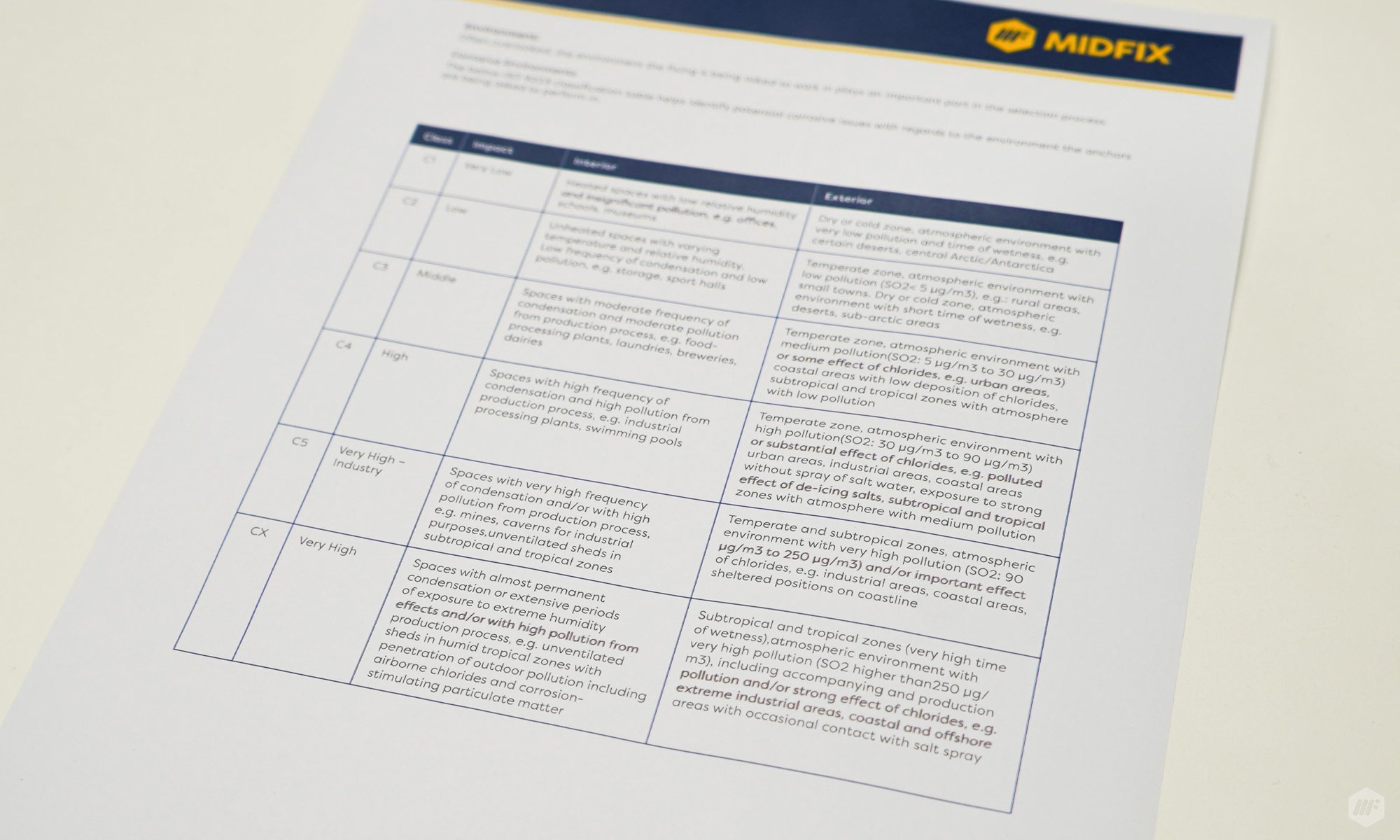
Conclusion
Before reading this article, you might not have thought there’s not much to channel! But hopefully, the different uses and applications for each type and finish of channel have now been clarified. Although HS41 is and will continue to be the default, it’s important to know when choosing another type such as HS21 or even LS41 might be beneficial to you and save on costs in the long run.



